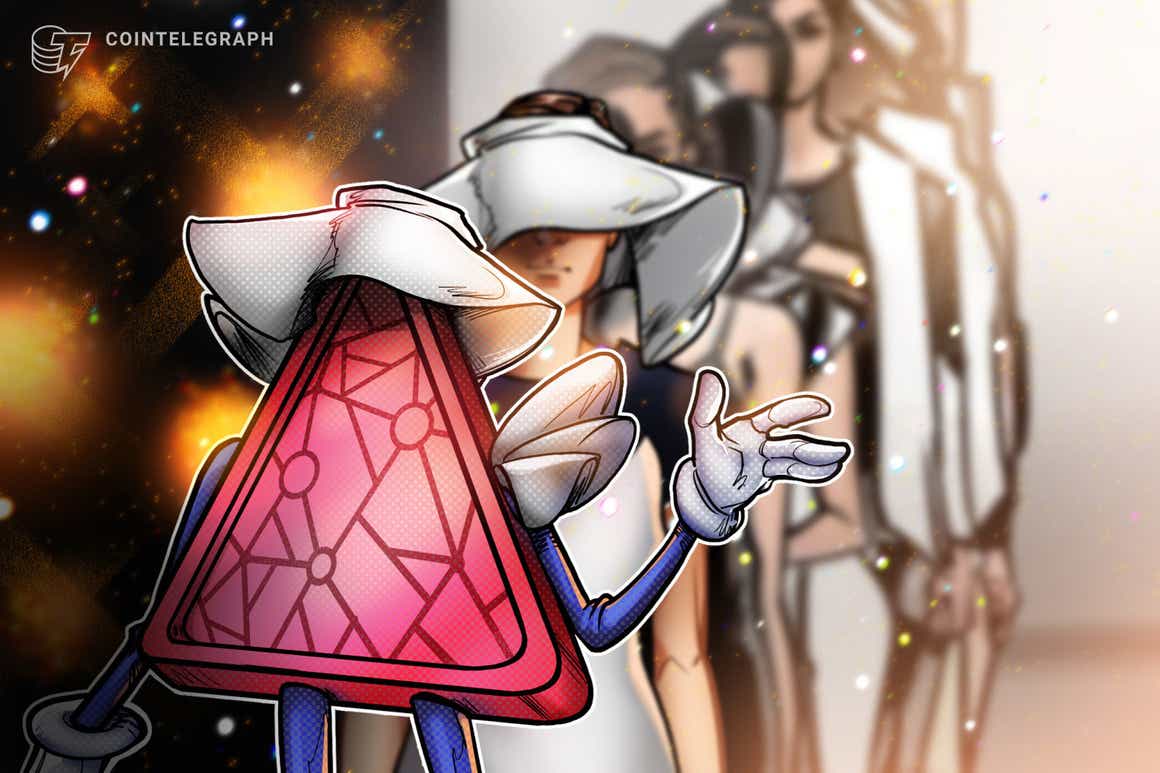Nonfungible tokens, or NFTs, have become one of the most discussed markets in the crypto space this year. A recent report from Cointelegraph Resear
Nonfungible tokens, or NFTs, have become one of the most discussed markets in the crypto space this year. A recent report from Cointelegraph Research found that NFT sales are aiming for a $17.7 billion record by the end of 2021.
This may very well be the case, as a number of mainstream brands have begun launching NFTs. According to recent research from Bain & Company and the online luxury fashion platform Farfetch, digital interactions with consumers are becoming increasingly important for brands. The report specifically states that “digital interaction with peers is on the rise when choosing to purchase a product.” As such, nonfungible tokens tied directly to brands and their consumers are now more important than ever before.
Understanding what utility means for fashion NFTs
While it’s notable that mainstream labels like Adidas, Dolce & Gabbana and others have already released NFTs, the utility behind nonfungible tokens is proving to be the real key to a fashion brand’s success. Karinna Grant, co-chief executive officer of The Dematerialised, a digital fashion marketplace, told Cointelegraph that utilities are what give nonfungible tokens purpose and value:
“Just as in real-life, where a physical card can scan you access into a club, a utility can be anything from using the NFT as a membership pass to the ability to wear an asset in a game, or incorporating a sustainability or social responsibility benefit for purchasers of the NFT.”
Grant noted that The Dematerialised has experimented with multiple forms of utility with each of the fashion NFT drips the platform has launched. She explained that previous releases have included utilities like wearing or playing with a 3D asset in augmented reality, or unlocking access to brand communities. “With Rebecca Minkoff’s sold-out NFT collection in September, the highest tier of NFTs unlocked VIP access to brand experiences for a year.” She added: “Karl Lagerfeld’s “x Endless” collection provided an opportunity for owners of Karl collectibles, an IRL and URL ticket to a brand event in Paris in 2022, which will feature another launch where only Karl holders will be invited to take part.”
It’s become clear that fashion NFTs must offer some type of consumer engagement, allowing brands to interact with individuals in both the physical and the digital worlds. Avery Akkineni, president of VaynerNFT — an NFT consultancy agency — told Cointelegraph that while the utility of some NFTs can simply be for the sake of art, brands launching NFTs require deeper functionality built upon an existing community.
For example, Akkineni shared that VaynerNFT recently helped the global fashion house, Coach, launch its first NFT collection, which featured eight Coach Holiday animals from the brands’ Snow City digital game. Akkineni added that the NFT launch was also in celebration of Coach’s 80th birthday, which resulted in the creation of 80 unique digital art pieces featuring the eight Coach holiday animals.

Akkineni explained that each digital Coach NFT also grants the right for the initial holders to receive one complimentary made-to-order physical rogue bag in 2022. “Something that Coach wanted to do was to explore this new world of NFTs, but wanted to in a way that wouldn’t commercialize their IP or ask consumers to pay for anything,” she said. To efficiently engage with the Coach community, Akkineni mentioned that the Coach NFTs were given away for free during Dec. 17–24 this year:
“The Coach NFTs were claimable on the Polygon blockchain. Coach made sure not to commercialize too early and to learn about the space to gauge demand to see if their audience was interested in NFTs.”
Fashion NFTs must also function in the Metaverse
The fact that brands must now interact with consumers both virtually and in real-life has also added an extra layer of technical utility to NFTs. As Bain & Company’s latest luxury goods report states, “new keywords and phrases — such as metaverse, personalization at scale, and tech stack — will come to the fore as the industry grows and evolves.”
As such, some companies have started to explore NFTs in the Metaverse. For example, Pet Krewe — a pet apparel e-commerce company — recently opened a digital commercial space in the Metaverse community known as “ShibaVerse.” Allison Albert, founder and chief executive officer of Pet Krewe, told Cointelegraph that the company is promoting its brand by featuring its NFT pet clothing in a Metaverse containing balloon dogs called “Shibaloons.”

According to Albert, Pet Krewe’s NFTs will be worn as unique designs that fit the Shibaloons. While Albert pointed out that these costumes can be held and swapped out on different Shibaloon dogs within ShibaVerse, Pet Krewe is using this digital commercial space as another form of brand engagement or marketing. “We can connect with…
cointelegraph.com
